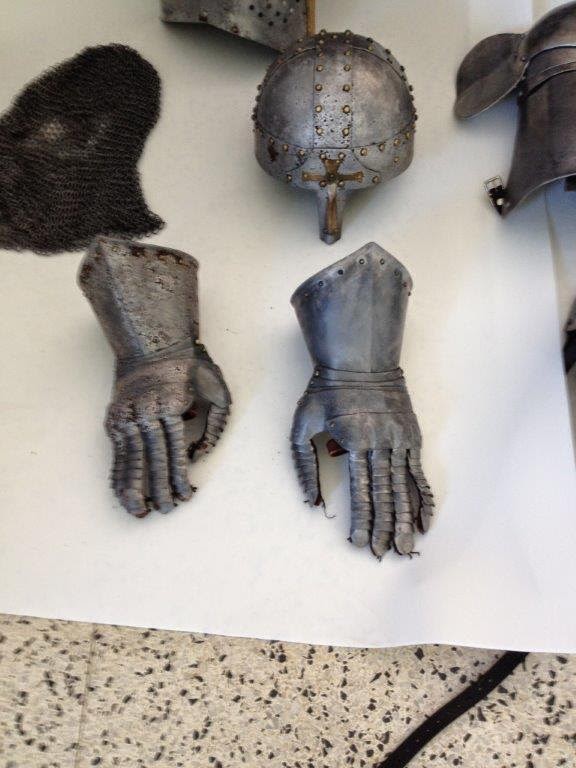Edited
By: Diane Mulvihill
Introduction
By: Ali Semeraro
A
customer of ours, Bill Gaetano of Gaetano Construction, approached us with a
suit of armor approximately a month ago. His story of how he and his son
discovered the armor and the process by which it was brought back to brilliant life
is as follows as told by project leader John DelMonte, Hubbell Employee.
The complete suit of armor was found in
the basement of a house Bill and his son recently purchased. It was a
replica, but it was obvious that there was great effort taken to make it as
original and authentic looking as possible. As you will see in the photos,
particularly the gloves, small sections of metal were hammered out and attached
to each other, forming the protective layer for each finger. Our
customer was unsure what, if anything, we could do for him to remove the
oxide/rust that had formed, some being so aggressive it started to create a
distinct pattern in the metal surface.
Traditional
methods of rust removal are media (sand) blasting, which would leave the metal with
a very pitted look, and take away from the old school hammered look, which
is not what he was looking to achieve. Another method would be a strong acid,
which would destroy the leather strapping and possibly the brass rivets and
brass detail of some of the pieces.
DelMonte,
called in our chemical supplier, from DuBois Chemical and discussed what process
methods they could offer. The final decision was to try out a new green rust/oxide
remover that they had never tried before.
One
day was put aside, when our shop was quiet (a day when most of our employees
were off) for DuBois Chemical employee, Tom O’Connor and DelMonte to get to
work trying to salvage the suit of armor. They set up a small tub of the new green
rust/oxide remover product, taking into account the proper concentration level,
and also added a small stream of air into the tub to keep the chemical solution
in suspension and aid in agitation. They started with the small segmented elbow
guards first, keeping them in solution for 30 minutes before examining the
results. The results were surprising and promising...the rust was all but
removed, with no signs of the chemical solution having and effect on the base
metal...as they were partially concerned about metal pitting.
DelMonte
and O’Connor added more armor pieces to the tub of solution and kept track of
the time, as 30 minutes was their baseline. As suspected, the solution did a
great job in removing the rust oxide. They did find that on the hard-formed
rust they needed to aid in the removal by hand scrubbing the rust, carefully,
without scratching the base metal. This was time consuming, but proved to be
effective.
As
the day progressed, items were removed and other items were added to the
solution, all resulting in a 95%+ removal of rust oxide, without hurting the
base metal, brass accents/rivets and leather strapping. Once they were
confident each item was finished in the solution it was rinsed with fresh
water, then a rust preventative chemical was sprayed on, to seal the pores of
the metal and in doing so, gave the metal a skin of protection against further
moisture/rust oxide from coming back.
Gaetano
was very surprised and pleased with the results, especially seeing that the
metal was kept in its original hammered state, with all brass hardware and
leather strapping in place. DelMonte and O’Connor suggested that he apply a
lite coat of gun oil to the metal surfaces to retard any moisture from settling
into the metal again.
This was a great way to experiment on material that we would not often see in our shop, and certainly an interesting and different project DelMonte decided to take on.


















